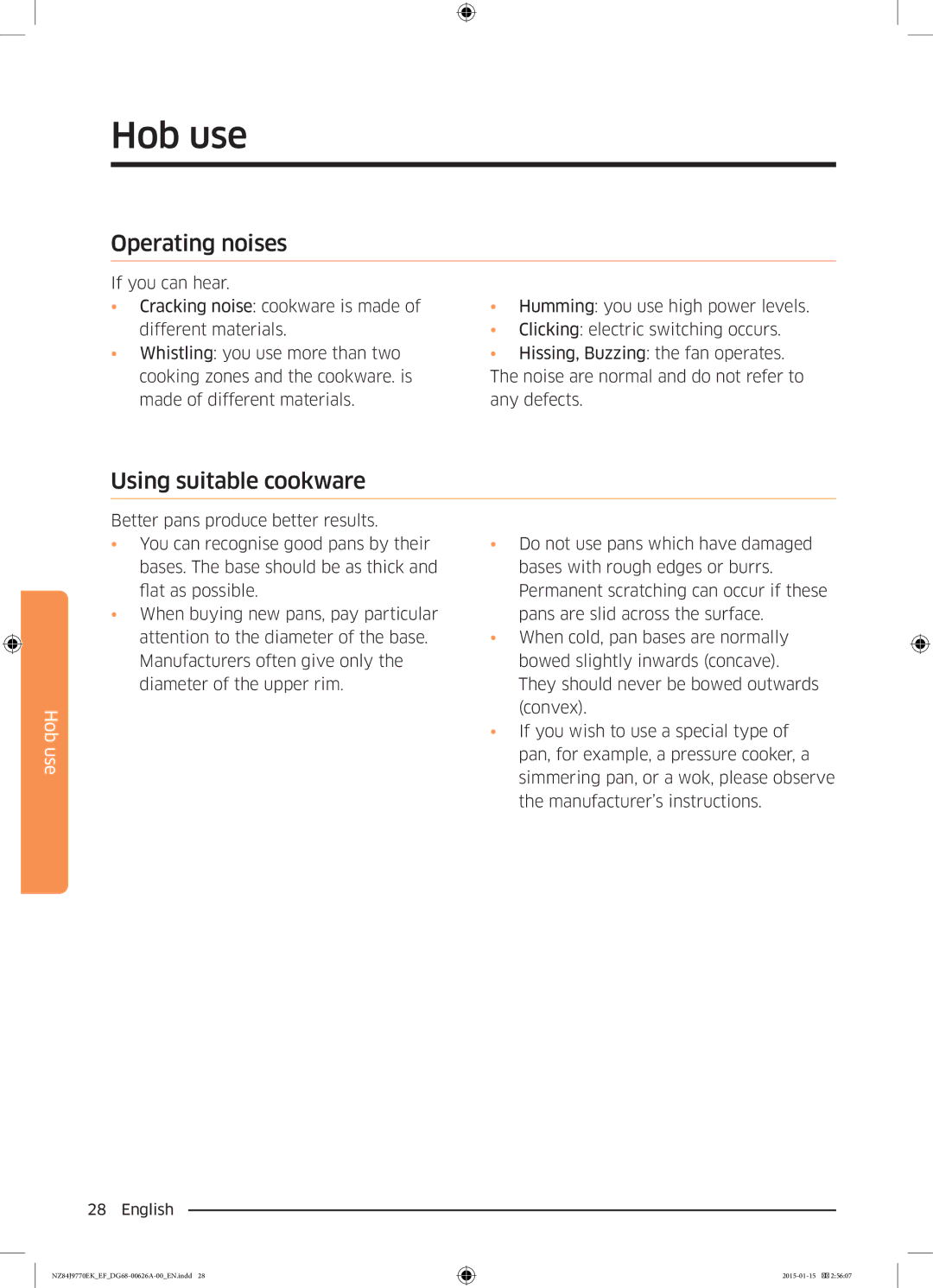
Hob use
Operating noises
If you can hear.
•Cracking noise: cookware is made of different materials.
•Whistling: you use more than two cooking zones and the cookware. is made of different materials.
•Humming: you use high power levels.
•Clicking: electric switching occurs.
•Hissing, Buzzing: the fan operates. The noise are normal and do not refer to any defects.
Hob use
Using suitable cookware
Better pans produce better results. |
|
• You can recognise good pans by their | • Do not use pans which have damaged |
bases. The base should be as thick and | bases with rough edges or burrs. |
flat as possible. | Permanent scratching can occur if these |
• When buying new pans, pay particular | pans are slid across the surface. |
attention to the diameter of the base. | • When cold, pan bases are normally |
Manufacturers often give only the | bowed slightly inwards (concave). |
diameter of the upper rim. | They should never be bowed outwards |
| (convex). |
| • If you wish to use a special type of |
| pan, for example, a pressure cooker, a |
| simmering pan, or a wok, please observe |
| the manufacturer’s instructions. |
28 English
